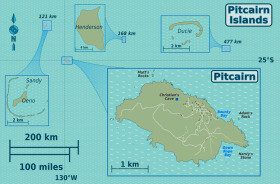Content |
|---|
Description
19 cm.. length and a weight between 42 and 55 g..
The plumage of the Stephen's Lorikeet (Vini stepheni), in general is green.
The upper part of the head is light green. The region of the windows of the nose, the cheeks, the ear-coverts, the neck, the chest and the abdomen They are red. It has a belt Variable greenish purple size chest. Thighs and bottom of the abdomen They are purple. The Hip is yellowish-green. The feathers wing-coverts They are red and green; the primaries, longer, are black. The upper part of the tail It is yellowish green and the bottom darker yellow with green.
The irises It is reddish brown, the legs and the bill are orange.
The immature they have the underparts green with purple and red marks on the throat and the abdomen. Tail dark green. The bill and eyes They are brown.
- Sound of the Stephen's Lorikeet.
Habitat:
Its usual habitat are dense shrubs and trees, Palm trees, handles, coconut and banana plantations.
They make daily trips from the forest into the coastal strips to feed in coconut palms.
They live in pairs or small groups outside of the breeding season.. They are very active and hard to see in dense vegetation; the easiest way to see them is in flight, they are easy to distinguish by their bright red plumage. Its flight is fast with a characteristic buzz of the wings.. They are not shy and allow you to see them up close, are especially when eating.
Reproduction:
There are no data about its reproduction in the wild.
Food:
The Stephen's Lorikeet is omnivore, consumes nectar, pollen and fruits of a wide variety of plants. The flowers of the plants Scaevola sericea and Timonius polygamus They provide the main sources of nectar. Arthropods are part of the diet, including lepidopteran larvae found in the sporangia fern Phymatosorus
Distribution:
The Stephen's Lorikeet is limited to Henderson island in the Pitcairn Islands, a small island uninhabited and surrounded of coral limestone cliffs, in the south-central zone of the Pacific Ocean.
The Pitcairn Islands, Henderson, Ducie and Oeno There are four volcanic islands in the southern pacific ocean. These islands are a British overseas territory (formerly a British colony), the last one left in the peaceful.
In 1987, the total population It was estimated between 720 and 1.820 specimens.
Conservation:
• Current IUCN Red List category: Vulnerable
• Population trend: Stable
This species may be the only member of its genus whose habitat and population size have been little affected by adverse changes in its environment.. But, is qualified as vulnerable, Since it is only on a small island.
It seems to have adapted to the presence of the only introduced predator., the pacific rat (Rattus exulans). In August of 2011, a rat eradication operation was carried out in the Henderson island to eradicate R. exulans of the island. But, the accidental introduction of a more aggressive predator, as other species Rattus, could be devastating. Diseases such as malaria avian and smallpox are another potential threat. The introduction of exotic plant species could have serious consequences for native vegetation and, Therefore, for this species.
– Rat eradication could save seabirds on Henderson Island
Averted a potentially serious threat in 1983 When an American millionaire sought to make a home in the Henderson island. The request was rejected by the Government of the United Kingdom. Henderson is now a world heritage site.
"Stephen's Lorikeet" in captivity:
There are currently no known Stephen's Lorikeet in captivity. VULNERABLE.
Due to its endangered status, any specimen that can not be returned to their natural habitat (natural range) should preferably be placed in a well-managed breeding program to ensure the survival of the species.
Alternative names:
– Stephen’s Lorikeet, Henderson Island Lorikeet, Henderson Island Lory, Henderson Lorikeet, Henderson Lory, Stephen’s Lory, Stephens’s Lory (ingles).
– Lori de Stephen (French).
– Hendersonlori, Henderson Lori (German).
– Stephen Lori (Portuguese).
– Lori de Stephen (español).
scientific classification:
– Order: Psittaciformes
– Family: Psittaculidae
– Genus: Vini
– Scientific name: Vini stepheni
– Citation: (North, 1908)
– Protonimo: Calliptilus ? stepheni
Images “Stephen's Lorikeet”:
Videos "Stephen's Lorikeet"
————————————————————————————————
“Stephen's Lorikeet” (Vini stepheni)
Sources:
– Avibase
– Parrots of the World – Forshaw Joseph M
– Parrots A Guide to the Parrots of the World – Tony Juniper & Mike Parr
– Birdlife
– Photos:
1 – by © Pawl Warren – UK OVERSEAS TERRITORIES CONSERVATION FORUM
2 – By Peter Fitzgerald, Andrew J.Kurbiko, Hansbaer, Openstreetmap (File:Pitcairn Islands map.svg) [CC BY-SA 3.0], via Wikimedia Commons
– Sounds: Mark Todd (Xeno-canto)



